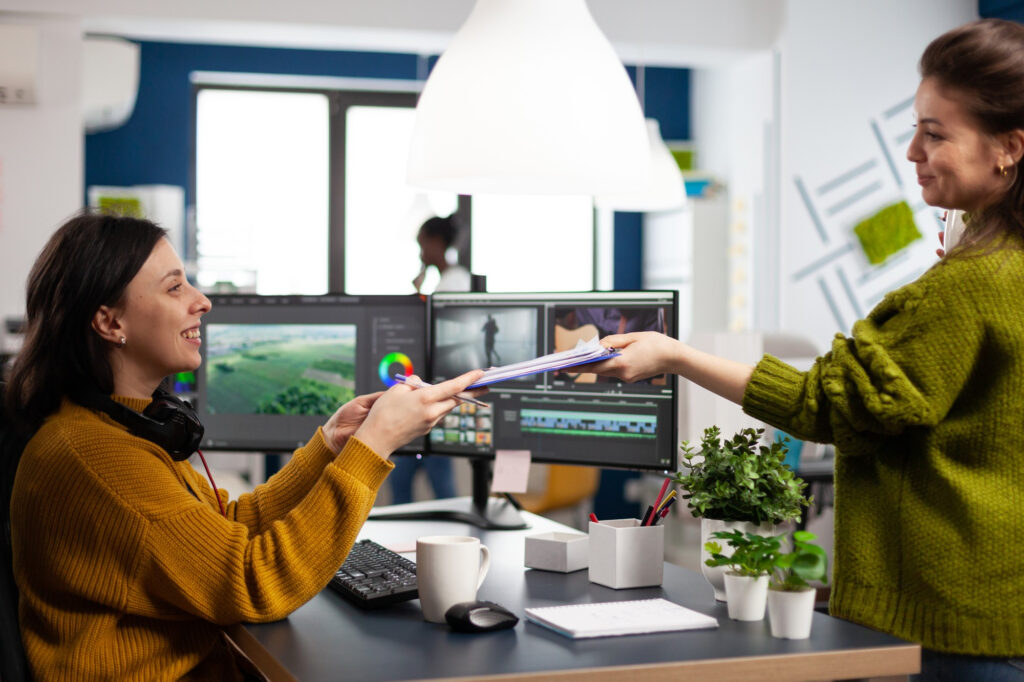In the competitive world of marketing and advertising, brand aesthetics play a crucial role in how consumers perceive a company or product. Production design, a discipline that encompasses everything from creating printed materials to producing events and immersive experiences, has become a fundamental tool for improving this aesthetic and differentiating a brand in a saturated market.
Understanding Production Design and Its Importance for Brand Aesthetics
Production design goes beyond just creating products or services; it’s about crafting experiences that captivate the audience and reflect the essence and values of the brand. It includes graphic design, creating experiences at physical points of sale, event production, brand activation, content creation, and digital experience design. All these areas have a direct impact on consumer perceptions of the brand and are therefore crucial for enhancing its aesthetics.
Graphic Design and Print Material
One of the most visible aspects of production design is graphic design and print material. From logos and brochures to product packaging and signage at points of sale, each printed piece communicates the brand’s identity and values. It’s crucial that these elements align with the overall brand aesthetic and convey a consistent and appealing message.
Point of Sale Experience Design
Production design also includes creating memorable experiences at physical points of sale. The layout of products, lighting, music, and overall ambiance significantly impact consumer perceptions of the brand. Carefully planned design can enhance the shopping experience, increase consumer dwell time in the store, and strengthen their emotional connection with the brand.
Event and Brand Activation Production
Events and brand activations offer unique opportunities to express the brand’s visual identity creatively and memorably. From decoration to music selection, each element of the event contributes to the attendees’ perception of the brand. Well-designed events can make a big impact on the audience, increase brand visibility, and create unforgettable experiences that reinforce the emotional connection with the brand.
Audiovisual Content Production
In the digital age, audiovisual content has become a powerful tool for communicating the brand’s visual identity. Producing videos, photographs, and other visual content allows brands to tell their story creatively and attractively. From advertisements to brand videos and user-generated content, audiovisual content plays a crucial role in consumer perceptions of the brand.
Digital Experience Design
With the growth of e-commerce and digital platforms, digital experience design has become increasingly important for enhancing brand aesthetics. Websites, mobile apps, and other digital platforms are key touchpoints between a brand and its consumers. Careful and consistent design on these channels can enhance the user experience, increase brand trust, and strengthen the emotional connection with consumers.
Key Elements of Audiovisual Production Design
In video production design:
Creative Scripting and Content Development
Audiovisual production design begins with creating a solid creative script and developing relevant and engaging content. This involves conceptualizing ideas, writing scripts, creating storyboards, and planning the visual and auditory narrative of the video.
Location Selection and Set Design
Audiovisual production design also encompasses selecting suitable locations and creating sets that complement the video’s story and message. This may involve location scouting, set building, and decorating spaces to achieve the desired atmosphere.
Casting and Talent Direction
Another important aspect of audiovisual production design is casting and directing talent. This involves selecting actors, presenters, or voice-over artists suitable for the project and directing them during filming sessions to ensure convincing and consistent performances.
Technical Team and Filming Equipment
Audiovisual production design also includes selecting the right technical team and filming equipment necessary to carry out the project. This may involve hiring cinematographers, cameramen, sound engineers, and other professionals, as well as selecting suitable cameras, lights, and audio equipment for production.
Editing and Post-Production
Once filming is complete, production design moves to the editing and post-production phase. This involves selecting the right shots, editing footage, adding visual and sound effects, color correction, and creating a final version of the video that meets brand quality and communication standards.
Distribution and Promotion
Finally, audiovisual production design may also involve planning and executing distribution and promotion strategies to ensure the video reaches the desired audience. This may involve publishing on social media platforms, optimizing for search engines, participating in film festivals, or collaborating with influencers to amplify the video’s reach.
In summary, production design plays a fundamental role in enhancing brand aesthetics. From graphic design to event production and audiovisual content creation, every aspect of production design contributes to consumer perceptions of the brand and helps differentiate it in a competitive market. By understanding the secrets of production design and how they can enhance brand aesthetics, companies can create memorable experiences that captivate their audience and strengthen their connection with the brand.







